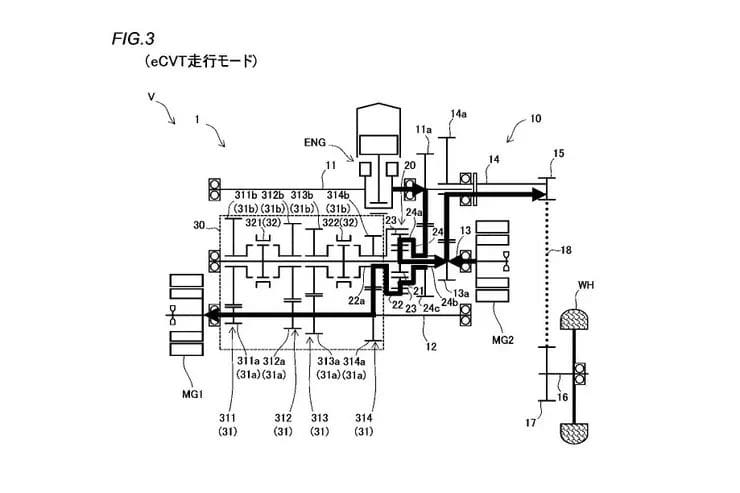Honda is working hard on its first ever hybrid motorcycle – combining a gasoline engine with electric motors – and the company is taking a typically complicated approach to creating a bike that claims to have unparalleled flexibility.
Several patent applications have been filed relating to the new bike and, although they show the outline of an X-ADV scooter wrapped in the hybrid running gear, the reality is that the system will be more suited to a tourer or sport-tourer, combining autonomy, performance and economy, but at the expense of weight and volume.

Unlike simpler hybrids – and at the moment there is one in the form of Kawasaki’s Ninja HEV, which is due to be launched as part of the company’s model range for 2024 – Honda is not simply adding an electric motor to reinforce a conventional engine and transmission. Instead, the company has come up with a design that uses not one, but two electric motors alongside its conventional gasoline engine and essentially has two transmissions, allowing it to operate in a variety of modes, including a pure electric, a slow-moving CVT and a normal bike with several fixed gear ratios.
The transmission layout is shown here (above). It’s partly inspired by the OG hybrid car – Toyota’s Prius – using a set of gears to link the two electric motors and the gasoline engine, dispensing with a conventional clutch.

It’s a bit hard to imagine, but the three power sources are connected to the gears. The main electric motor/generator – here called MG1 – drives the ring gear (via another gear). The second electric motor/generator (MG2) is permanently connected to the center gear, as is the transmission output shaft. It is also directly connected to the front sprocket, so whenever the rear wheel is turning, so is MG2.


Finally, the combustion engine (represented by a single piston in this drawing, but which in real life must be at least a twin-cylinder engine) is connected to the gear holder that sits between the crown and the central gear.







